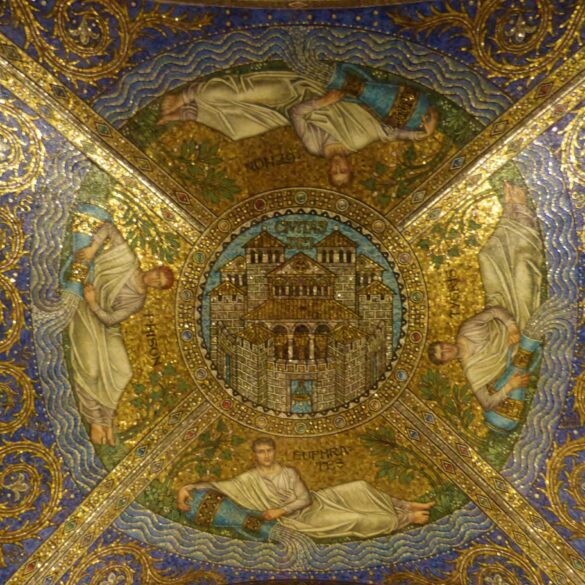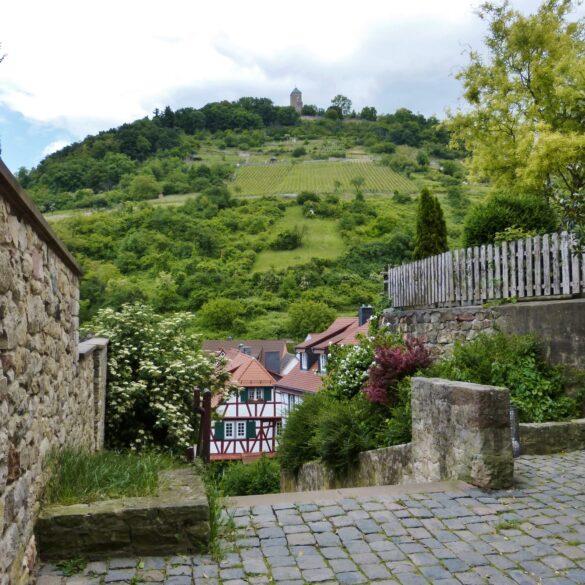There is a famous epic German poem called The Nibelungenlied (say that three times quickly!) or The Song of the Nibelungs.
I’ve actually read most of the poem – as an English translation – but for some reason have yet to finish it.
Anyway, one of the main characters in the story is Siegfried. In his younger days he killed a dragon and then bathed in its blood, which supposedly made him invincible. The only problem was that there was a leaf stuck to his bare back during his little bloodbath, so that was the one weak spot on his body because the dragon’s blood didn’t touch it. You can probably guess what eventually happened to Siegfried.
The spot where Siegfried killed the dragon is called Drachenfels or Dragon’s Rock. The oldest cog railway in Germany runs from the town of Königswinter up to Drachenfels.
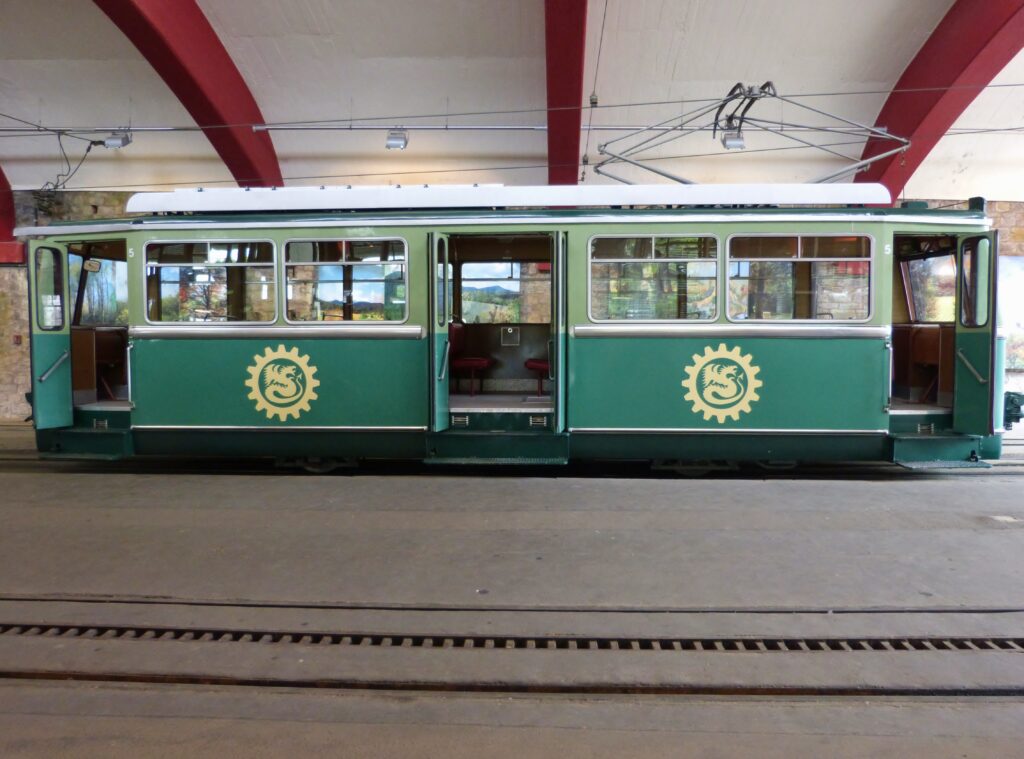
If you look closely at those two circles on the side of the train, you can see that it’s a dragon inside a cog wheel.
There’s Sean sitting right up next to the choo-choo train conductor!
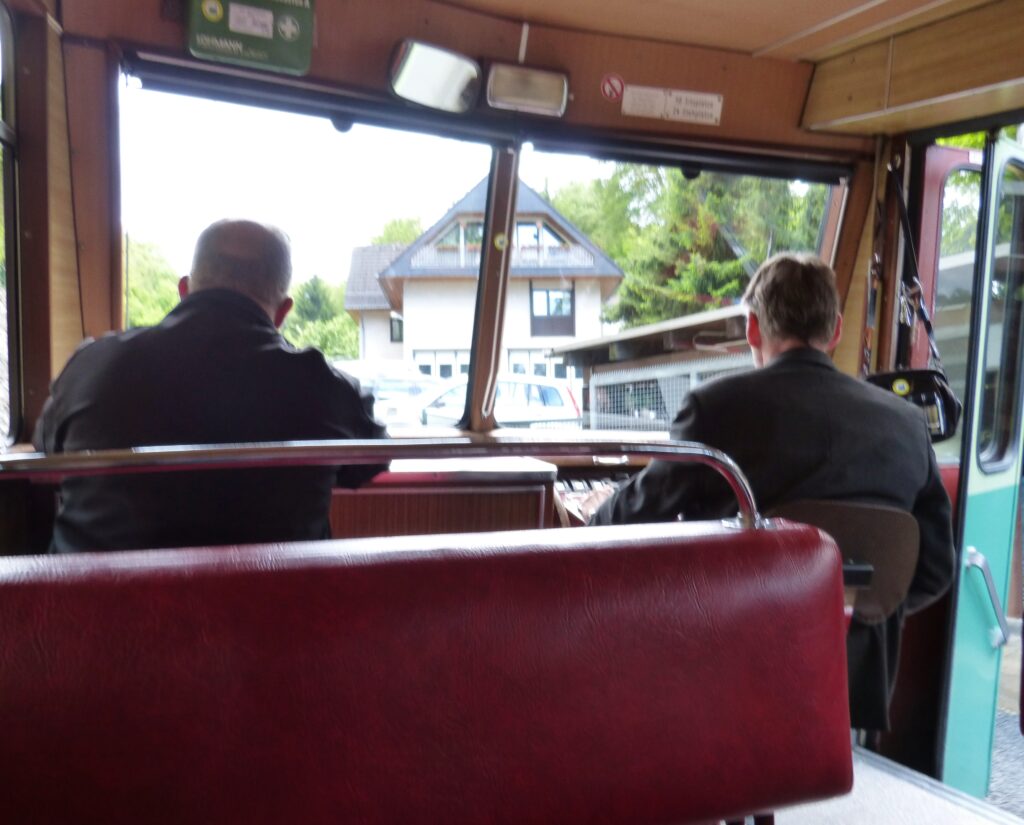
I thought it was a little much when he knocked a little kid out of the way to get that seat, but what can ya do. Just kidding.
The train makes two stops after it leaves Königswinter. We stayed on the train after the first stop and took it all the way to the top of the hill, which is Drachenfels.
There are some amazing views of the Rhine river from up there.
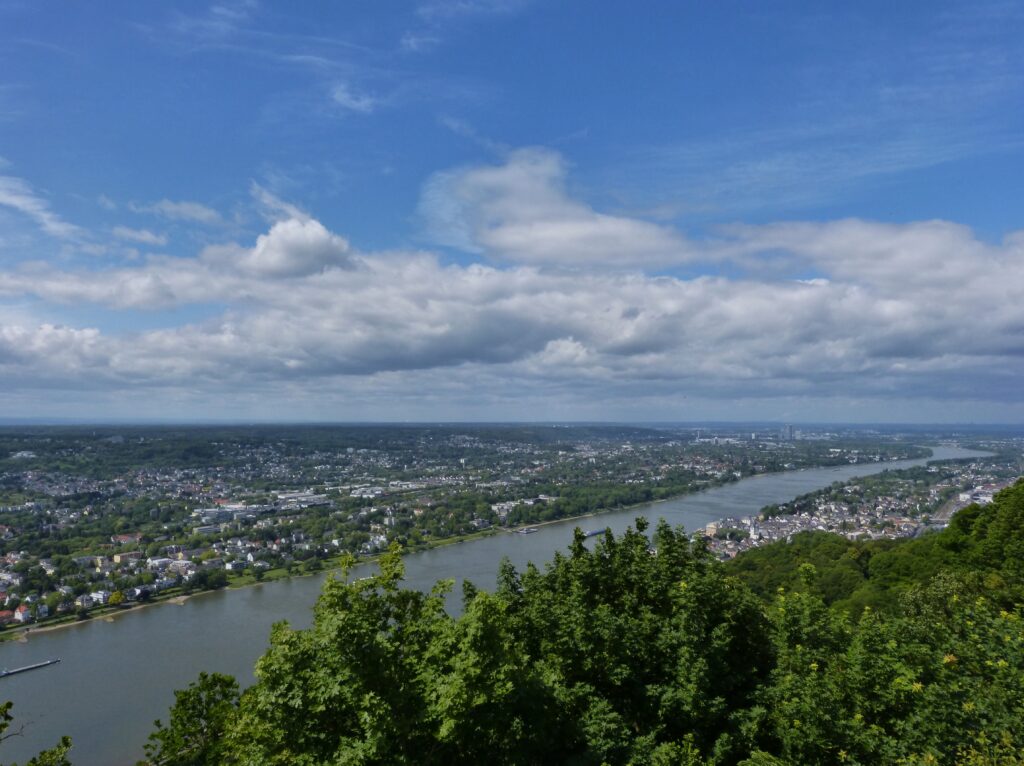
There actually is not a whole lot to see other than the views and this teeny part of a ruined castle. There is also a restaurant.
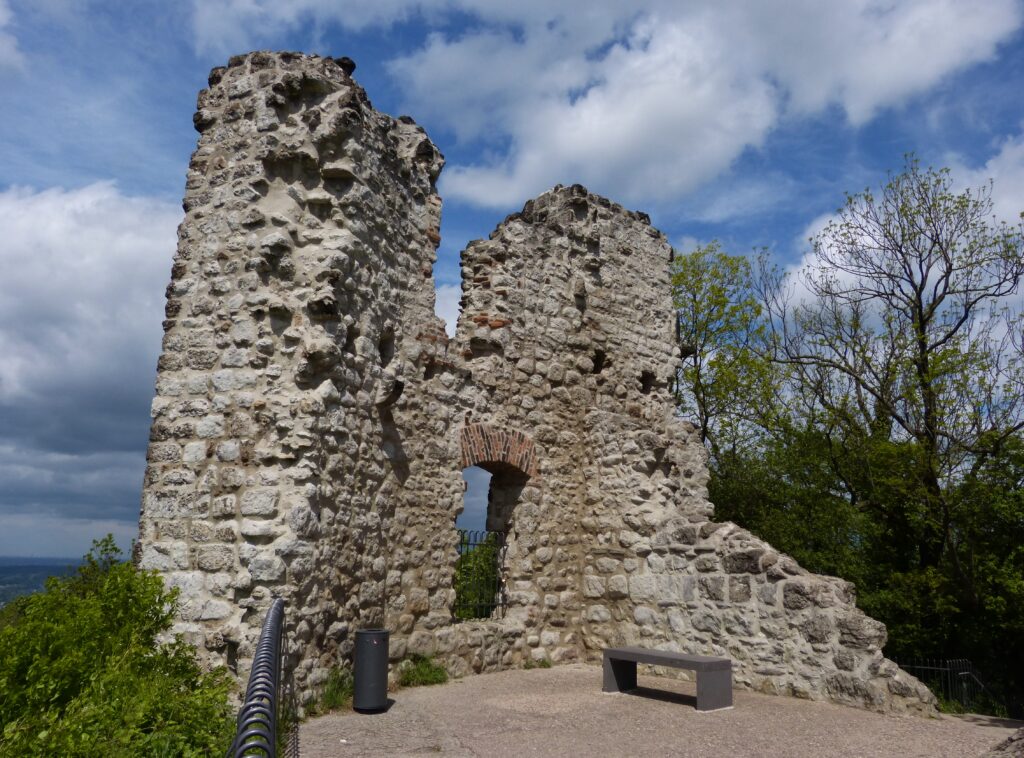
The castle was built in the 12th century and destroyed in 1634 during the Thirty Years’ War. It was never rebuilt and just decayed over the next few hundred years.
After enjoying the views up at Drachenfels, we got back on the little train and took it down to the middle of its three stops.
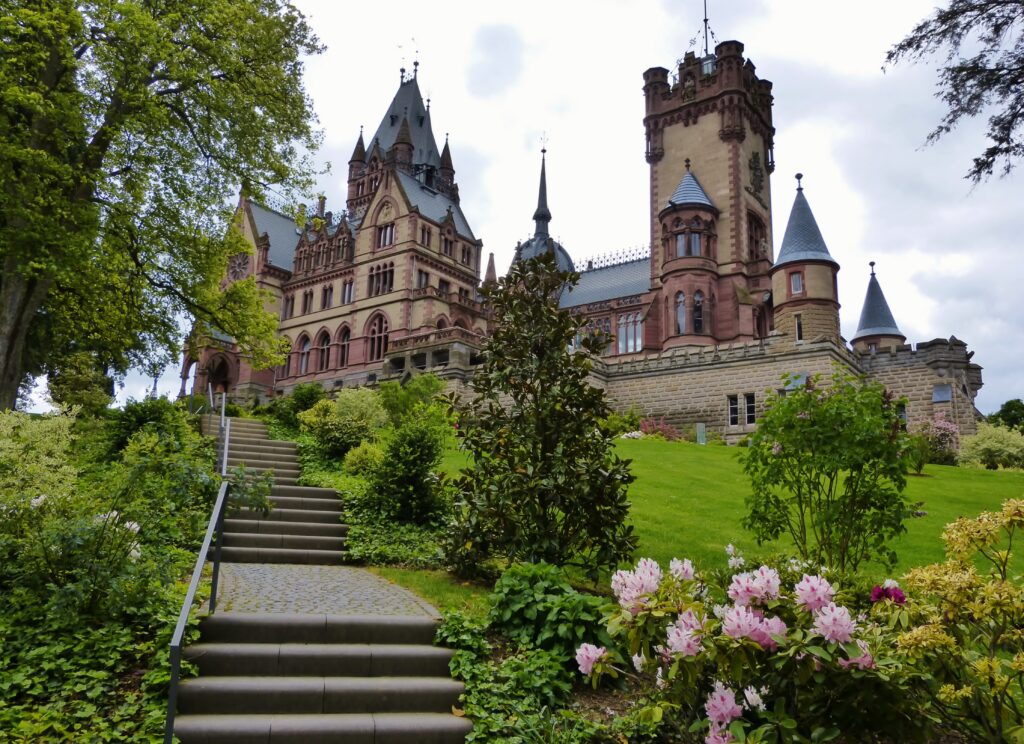
That’s Schloss Drachenburg, a palace overlooking the Rhine river that was constructed from 1882-1884.
A man by the name of Stephan Sarter built the Schloss but never lived there. It was later used as a Christian Brothers school and then as a Nazi school during World War II. After the war, the German rail authorities used it as a training center. From 1960 to 1970 it stood empty and was scheduled for demolition at one point, buy then a guy named Paul Spinat purchased and renovated it. Since his death, the North Rhine-Westphalia Foundation of Nature, Heritage and Culture has owned and maintained the Schloss.
There are no audioguides available, but you can rent a book that gives you information about the Schloss. The thing was really like a novel and was sort of information overload, but it was helpful.
This gorgeous stained glass window was one of many that were originally in the Schloss.
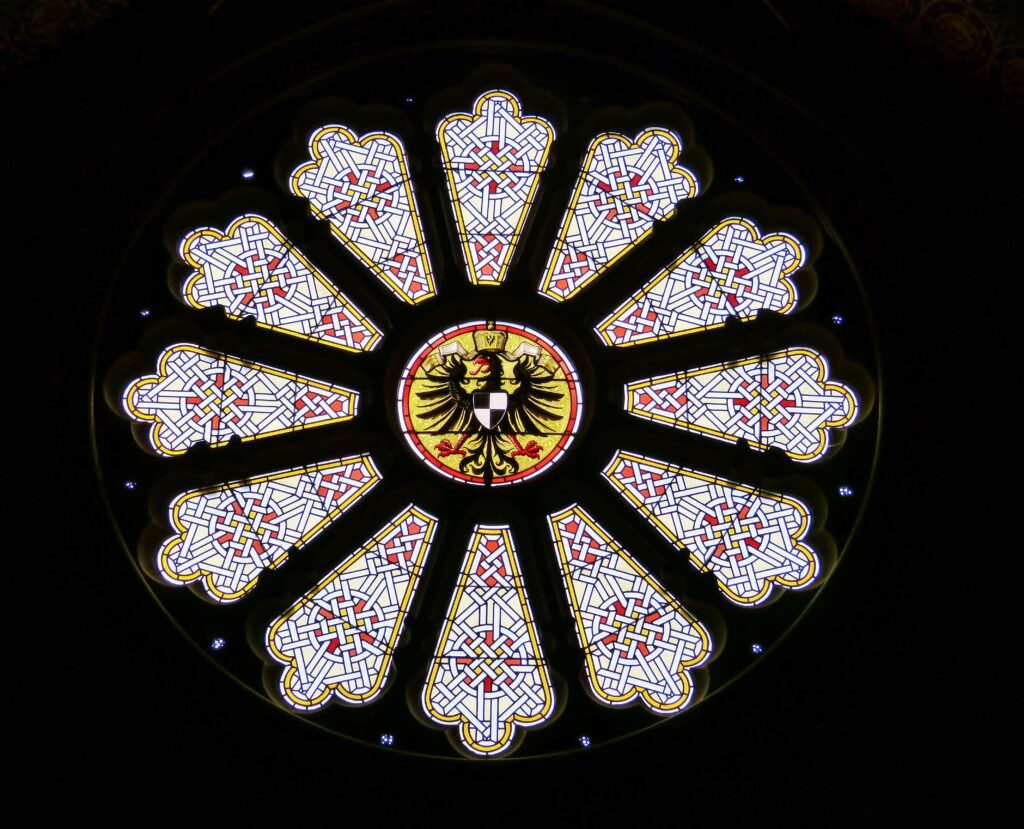
You see it when you get to the top of the main staircase and then turn around to look behind you. It is the only window that was completely preserved, though.
For example, this section of glass was originally part of a panel of five scenes.
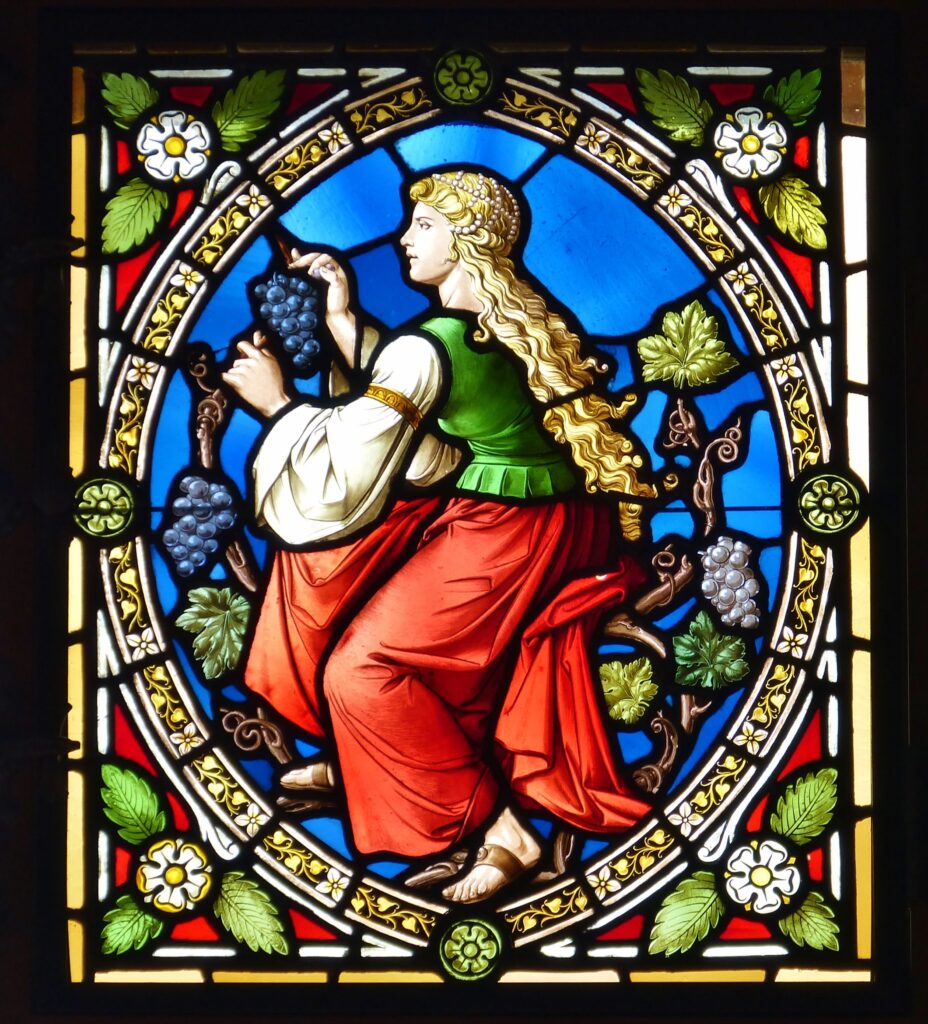
That panel is called Sense of Taste, and the missing/destroyed panels depicted the other four senses.
Here you see what was once stained glass and is now just plain glass.
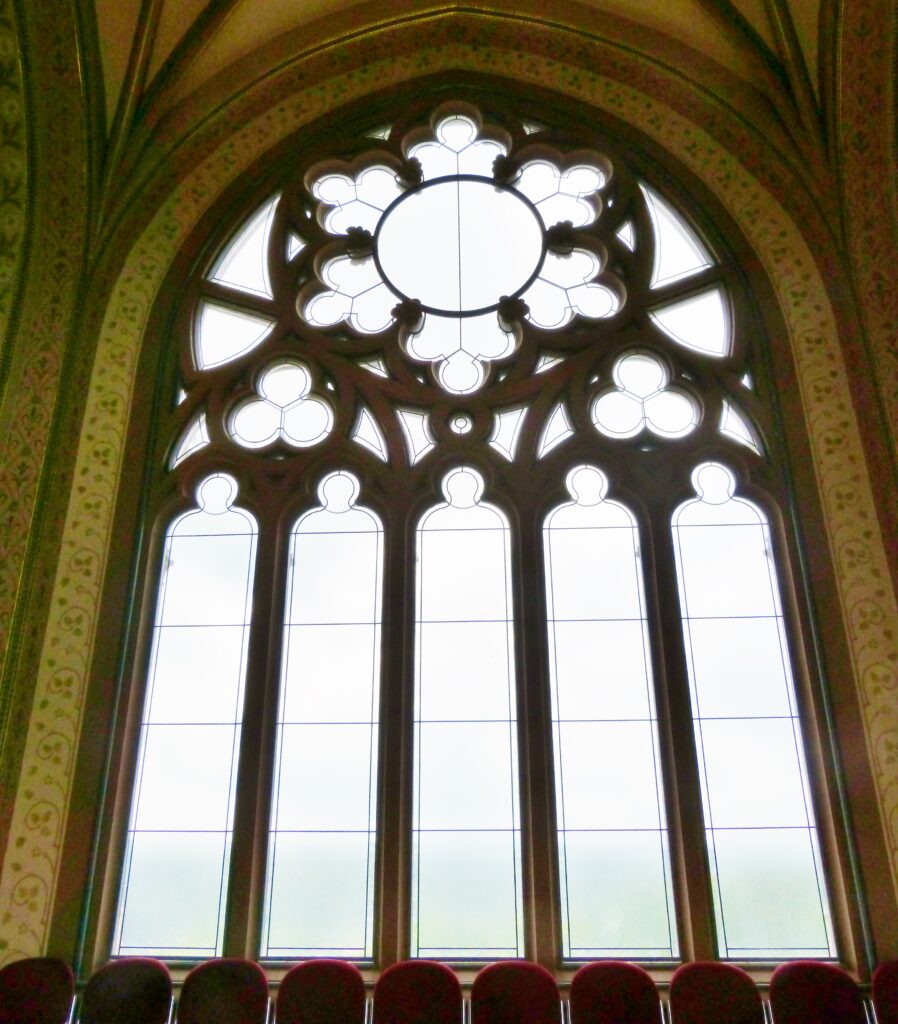
I’m sure it was once stunning, but most of the glass in the Schloss was either destroyed or stolen during World War II.
It’s always more fun to touch things when the sign says Do Not Touch, but I thought this was kind of amusing.
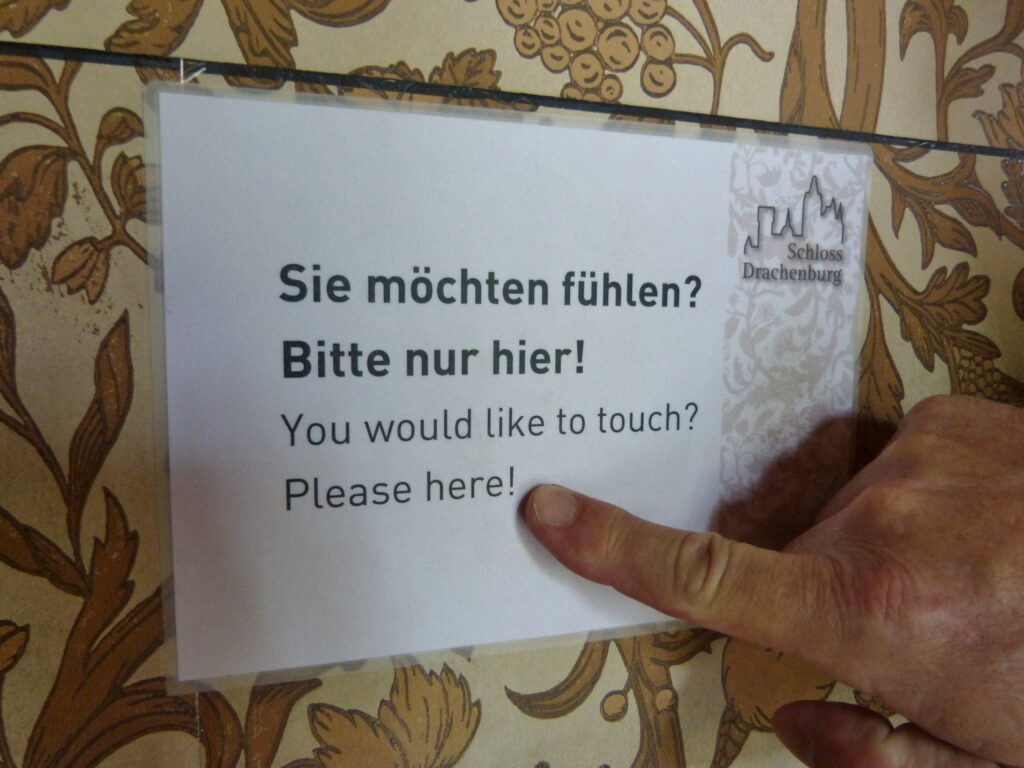
They were allowing you to touch the wallpaper, but Sean took it literally and touched where it said “Here”.
The inside of the Schloss was very ornately decorated, and the grounds were not too shabbily decorated either.
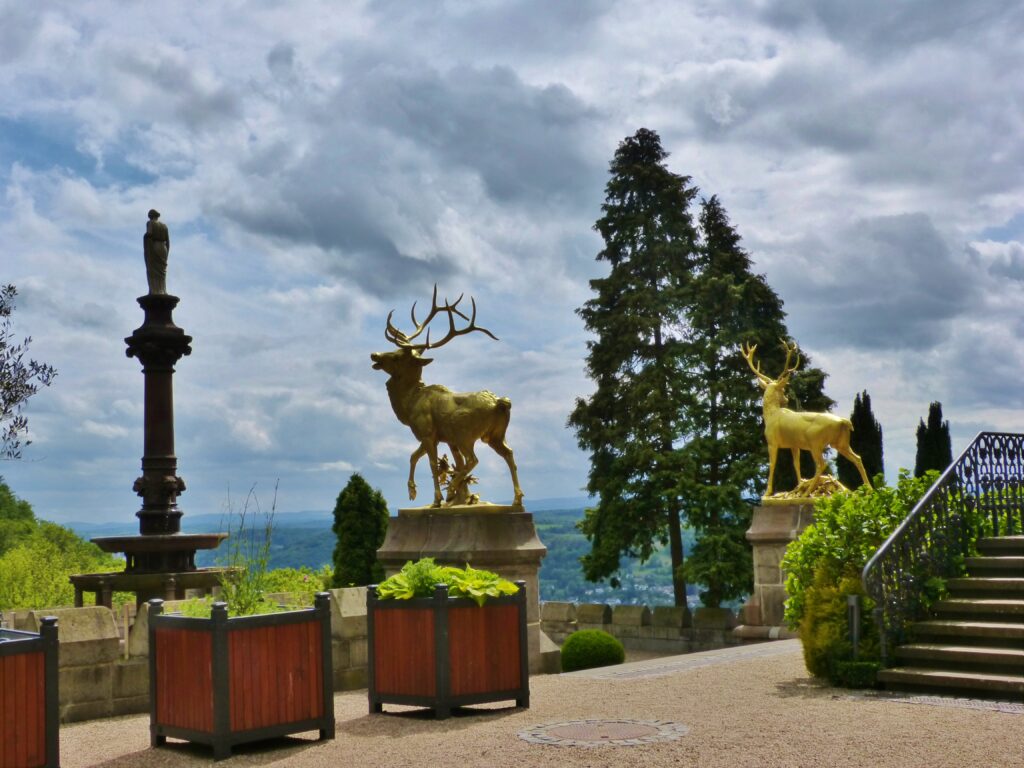
I guess if you have to stand guard duty at a palace, it doesn’t hurt to do it from a tower like this and with a view like that.
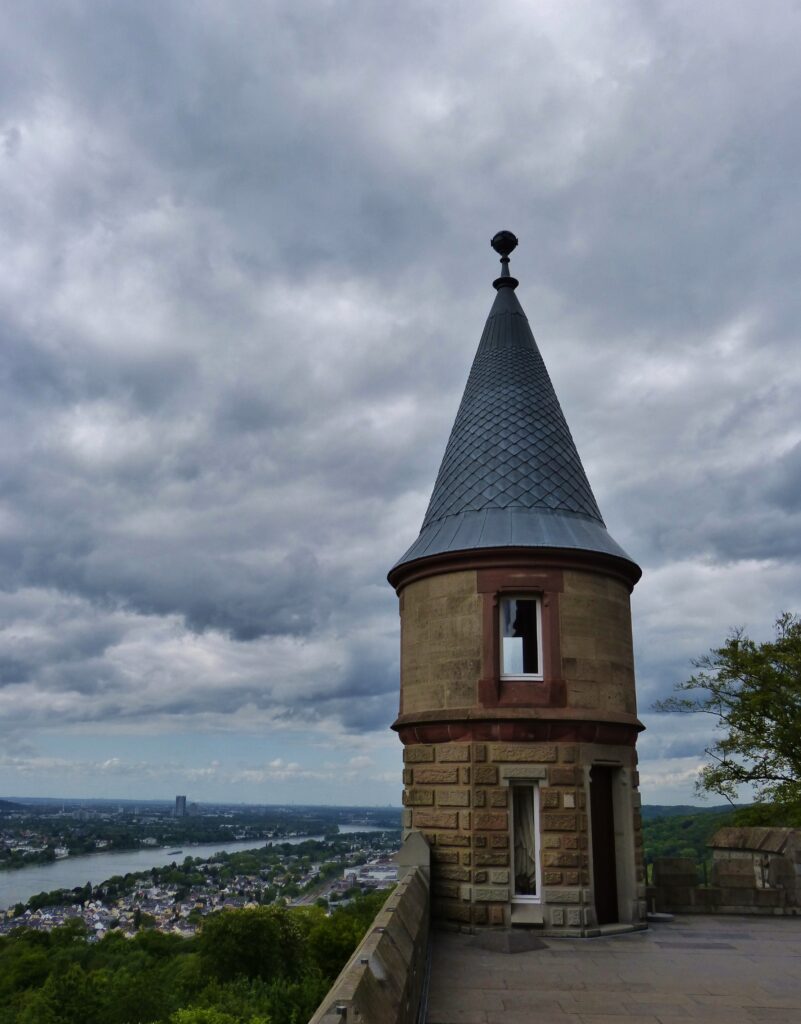
In a section of the Schloss called the Nordturm or North Tower, you can climb up and down a couple of hundred steps if you’re so inclined.

If you are so inclined, you’ll be rewarded with this view of the Rhine.
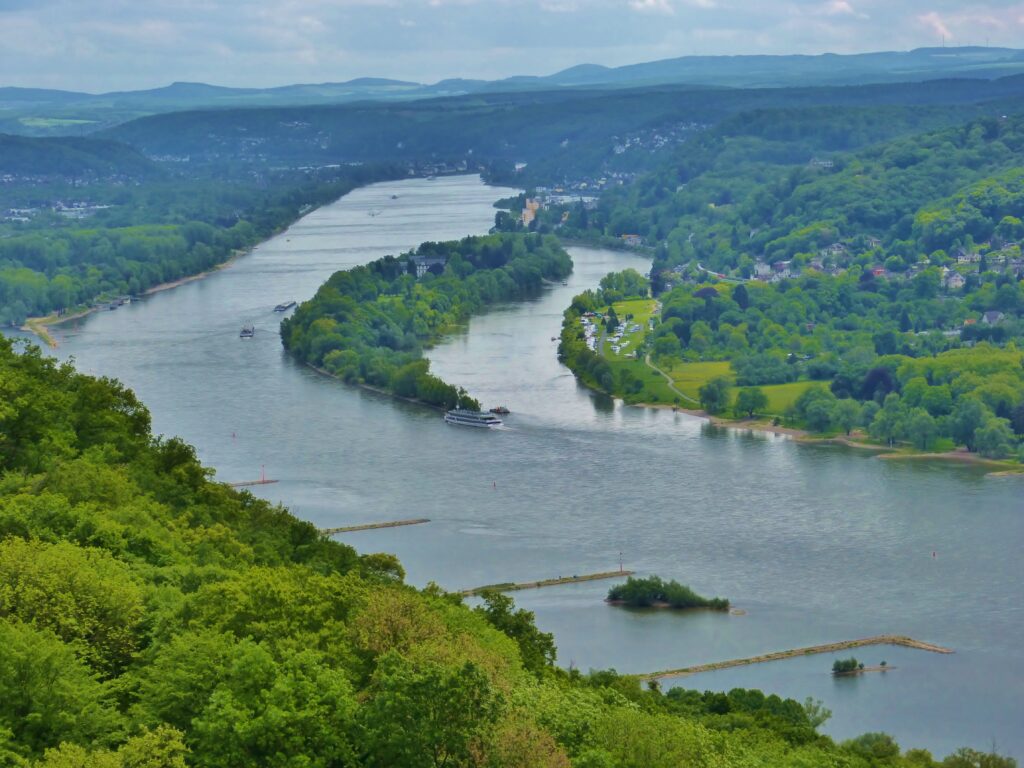
After we made our way back downstairs, we walked back over to the train to ride back down to Königswinter.
This sign inside the little ticket office/museum/gift shop/coffee counter shows the age of the Drachenfelsbahn (the train that takes you to Drachenfels).
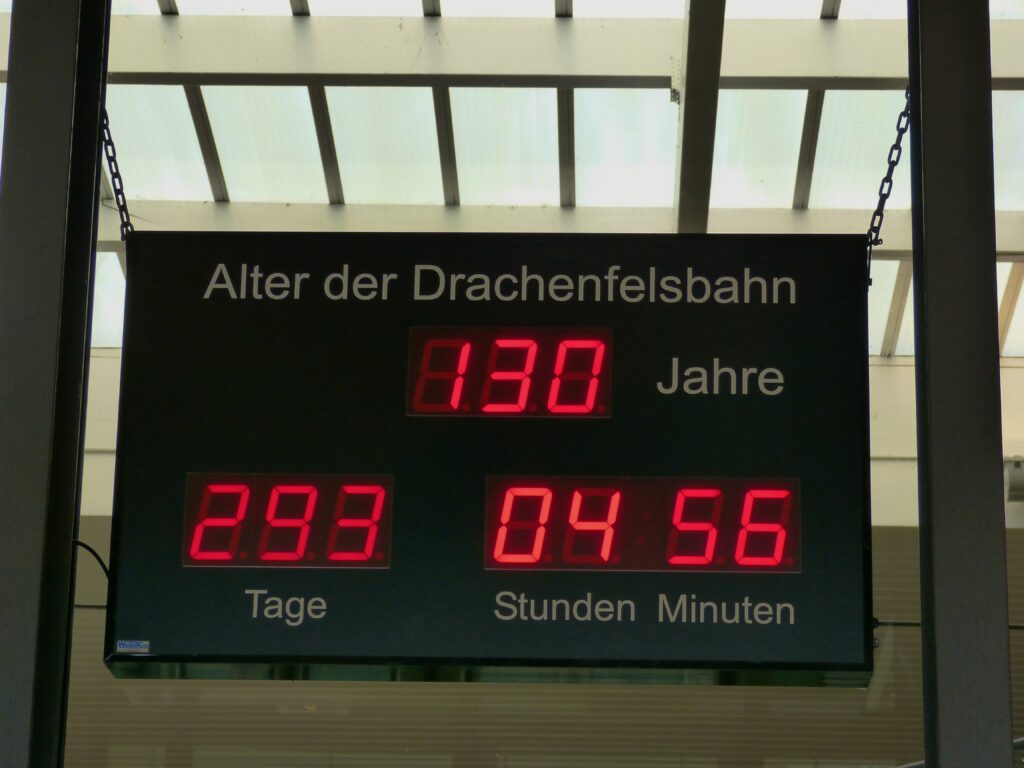
As you can see, on the day we were there the train was 130 years, 293 days, 04 hours and 56 minutes old.
We had spotted this place, the Hotel Petersberg, from Schloss Drachenfels
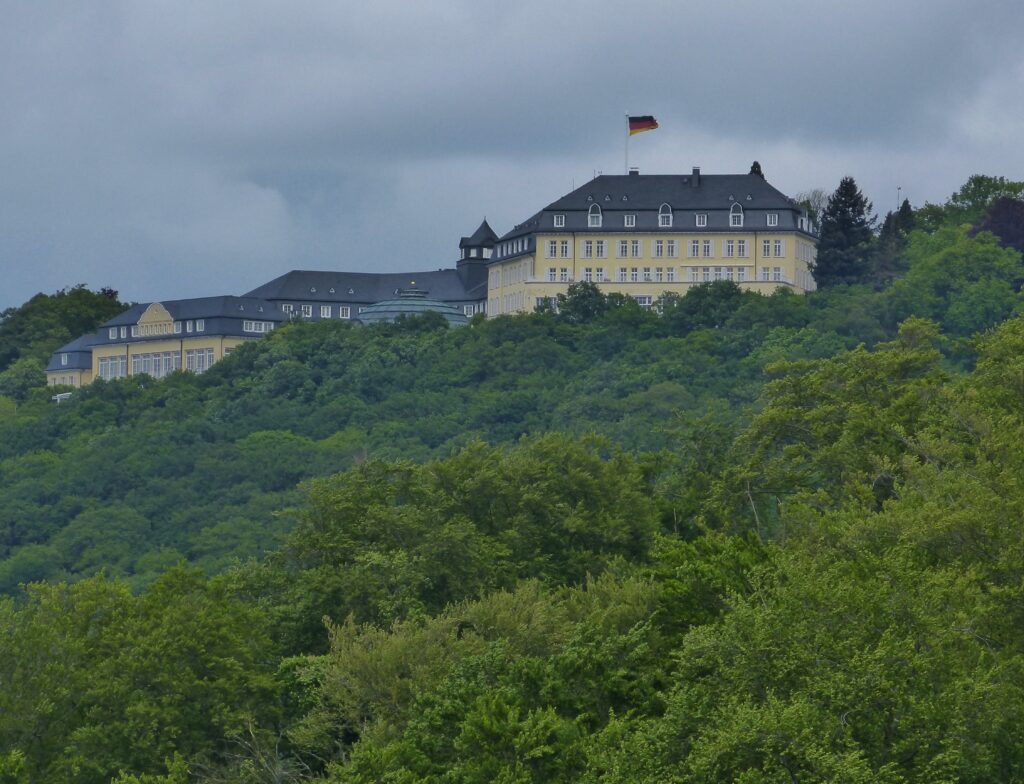
On our way home, we saw a sign for it so we drove up the mountain to check it out.
The German Federal government owns the hotel and uses it to house their official guests.
Over the years, the hotel has hosted some famous guests including former U.S. President Bill Clinton and his wife Hillary Clinton, Queen Elizabeth II, Nelson Mandela and Mikhail Gorbachev.
The hotel is open to the public and has a spa, a café and a restaurant. We decided on a whim to have a late lunch at the café and while the service was a bit slow (ok, a lot slow), the food was delicious.
While we took the train up to Drachenfels and back down to Königswinter, you don’t have to do that. There are walking trails in the area so you can hike up and/or down. Or you can buy a one-way ticket on the train to take it up to Drachenfels and then take a leisurely stroll back down, stopping at Schloss Drachenburg on the way.
Whatever you decide, the views alone will be worth the trip.

